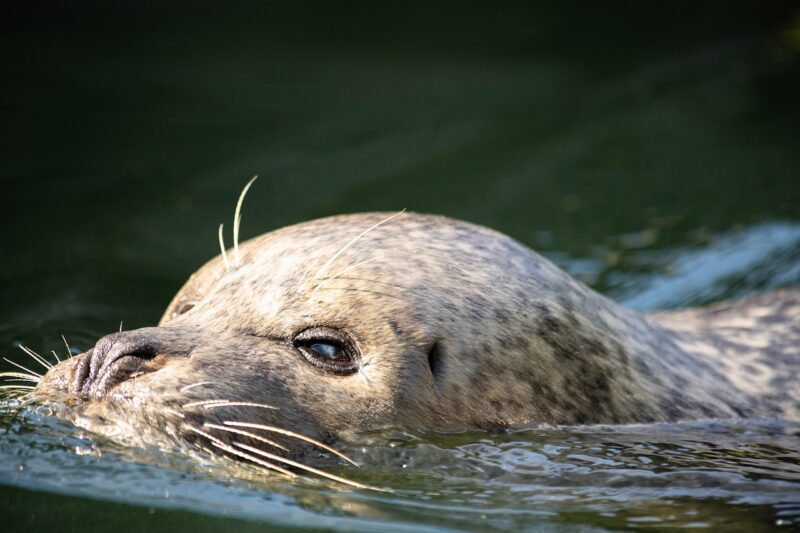The History of Zoos: How They’ve Evolved from Menageries to Modern Conservation Centers
November 16, 2024

Zoos have been a source of fascination and wonder for people around the globe. They provide a unique opportunity to observe exotic animals in settings that mimic their natural habitats. However, the journey of zoos has been anything but simple. From their origins as slightly more organized menageries to their current roles as centers of conservation, education, and research, zoos have undergone significant transformations over the centuries.
1. The Origins of Zoos: From Menageries to Collections
The concept of keeping animals for enjoyment dates back thousands of years to ancient civilizations such as Egypt, Mesopotamia, China, and India, where wealthy rulers collected exotic animals as symbols of power and prestige. The oldest recorded zoo is in Egypt, founded around 2500 B.C., and the earliest menagerie on the public record was kept in the private palace of King Solomon in the 10th century B.C.
These early collections served various purposes: they entertained royal courts, showcased wealth, and sometimes served educational purposes. As civilizations progressed, these collections evolved, turning into royal menageries where the elite could display their unique specimens.
During the Renaissance, the interest in natural science blossomed, spurring curiosity about the natural world. Collections multiplied, leading to more formal establishments arising in Europe. The first modern zoo, the Tiergarten Schönbrunn, was established in 1752 in Vienna, but it wasn’t until the 19th century that we truly saw the development of zoos as we know them today.
2. 19th Century: The Birth of the Modern Zoo
The 1800s marked a pivotal period in the history of zoos. The London Zoo, established in 1828, became the first scientific zoo, aiming to exhibit animals in a manner that was as educational as it was entertaining. This radical shift in perspective introduced the idea of zoos as centers of learning rather than merely display cases for exotic animals.
The establishment of the World’s Fair in 1851 helped popularize zoos, leading to increased public interest and the construction of more establishments across Europe and America. The St. Louis World’s Fair in 1904 introduced the idea of themed exhibits, where animals were displayed in environments that mimicked their natural habitats.
This era also saw the beginning of animal welfare discussions, challenging the harsh conditions in which many animals lived and prompting changes in legislation to ensure better treatment of zoo inhabitants.
3. The 20th Century: Transitioning Towards Conservation
As the 20th century progressed, the focus of zoos began to shift from merely displaying animals to conserving species and educating the public about biodiversity. The emergence of wildlife conservation as a field reshaped the mission of zoos. They began to participate in breeding programs aimed at preventing extinction, particularly for endangered species.
Organizations like the World Wildlife Fund (WWF) began to collaborate with zoos in the 1960s, fostering a greater commitment to conservation efforts.
The modern zoo began to embrace educational initiatives, designing programs to teach visitors about animal behavior, habitat preservation, and the importance of biodiversity. This era also introduced the idea of immersive exhibits, such as the San Diego Zoo’s Safari Park and the Bronx Zoo, which replicated animals’ natural environments more authentically, allowing for more natural behaviors.
4. The Role of Zoos Today: Conservation, Education, and Research
Today, zoos are multifaceted institutions that play crucial roles in conservation, education, and research. They not only aim to provide visitors with an exciting experience but also to inspire them to appreciate and protect wildlife. Modern zoos engage in a wide array of conservation activities such as:
- Breeding Programs: Zoos contribute significantly to breeding programs for endangered species, helping to maintain genetic diversity and work towards the reintroduction of species into the wild.
- Habitat Preservation: Many zoos fund projects that focus on habitat conservation and restoration in specific ecosystems around the world.
- Scientific Research: Zoos are vital centers for research on animal behavior, veterinary medicine, and conservation practices.
- Public Education: Zoos provide educational programs, school outreach, and informational exhibits that promote awareness about conservation issues.
Such efforts are essential, especially as human activity continues to threaten wildlife and habitats globally. By actively participating in these initiatives, zoos are becoming vital partners in global conservation efforts.
5. The Future of Zoos: Challenges and Opportunities
The future of zoos poses several challenges, particularly surrounding animal ethics, public perception, and the necessity to adapt to technological advancements. Criticism regarding captivity, ethical treatment, and the overall necessity of zoos remains significant.
However, with proper reorientation towards ethical practices, focusing on conservation and education rather than pure exhibition, zoos can develop into crucial entities for wildlife preservation. It is essential for zoos to evolve continuously in conjunction with societal values and scientific advances.
Innovations such as virtual reality experiences and mobile applications could revolutionize how people interact with wildlife. As communities become increasingly environmentally conscious, zoos have the opportunity to serve as conservationists and educators in the fight against biodiversity loss.
Beyond mere entertainment, zoos are becoming centers for many people to learn more about the animal kingdom, inspiring future generations to engage more proactively in wildlife conservation efforts.
Conclusion
The history of zoos highlights a fascinating evolution from elite menageries to modern conservation centers dedicated to preserving our planet’s biodiversity. As they continue to adapt to the changing landscape of wildlife conservation, the future of zoos looks promising. They are not just places to view animals; they are becoming powerhouses for education, dedication to ethical practices, and conservation, paving the way for a more sustainable relationship between humans and the natural world. By engaging in meaningful conservation efforts and educating visitors, modern zoos play an essential role in the urgent task of protecting wildlife for future generations.








